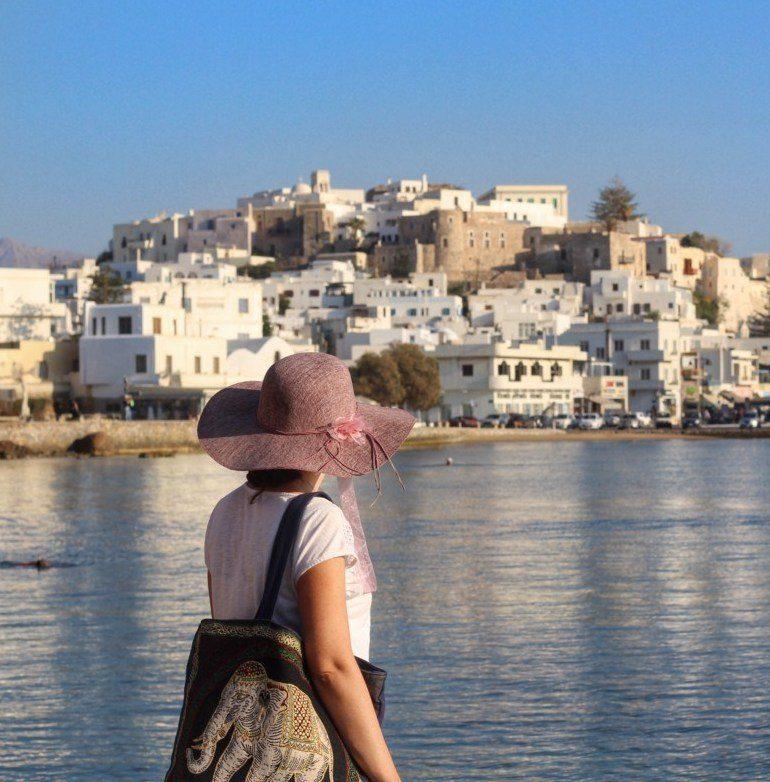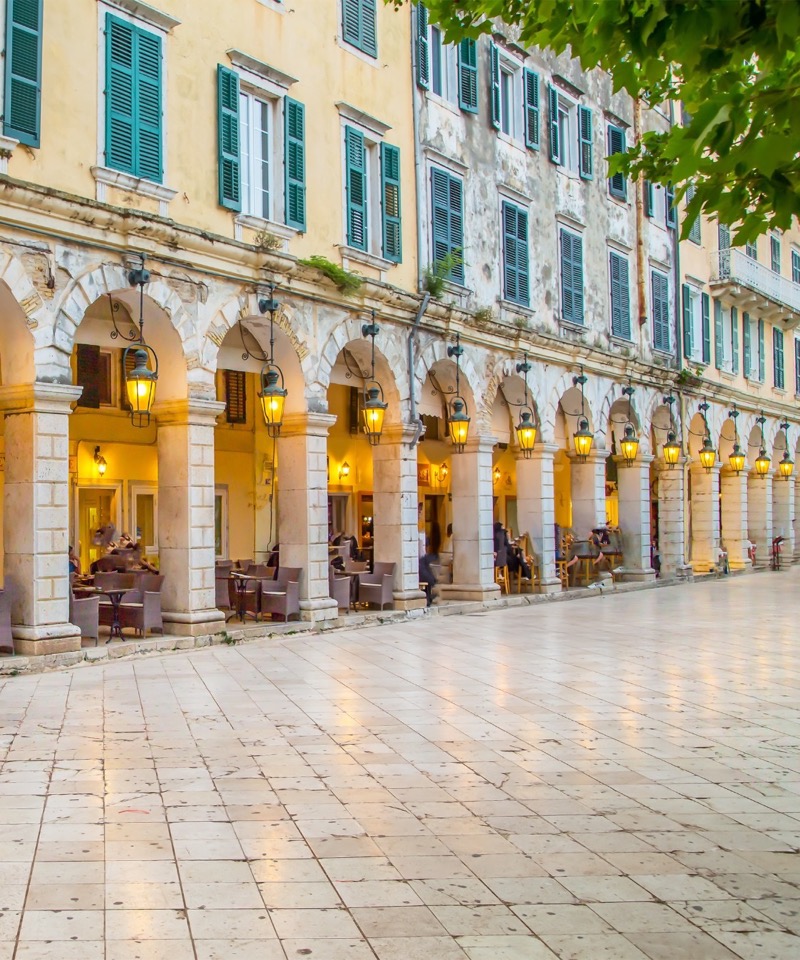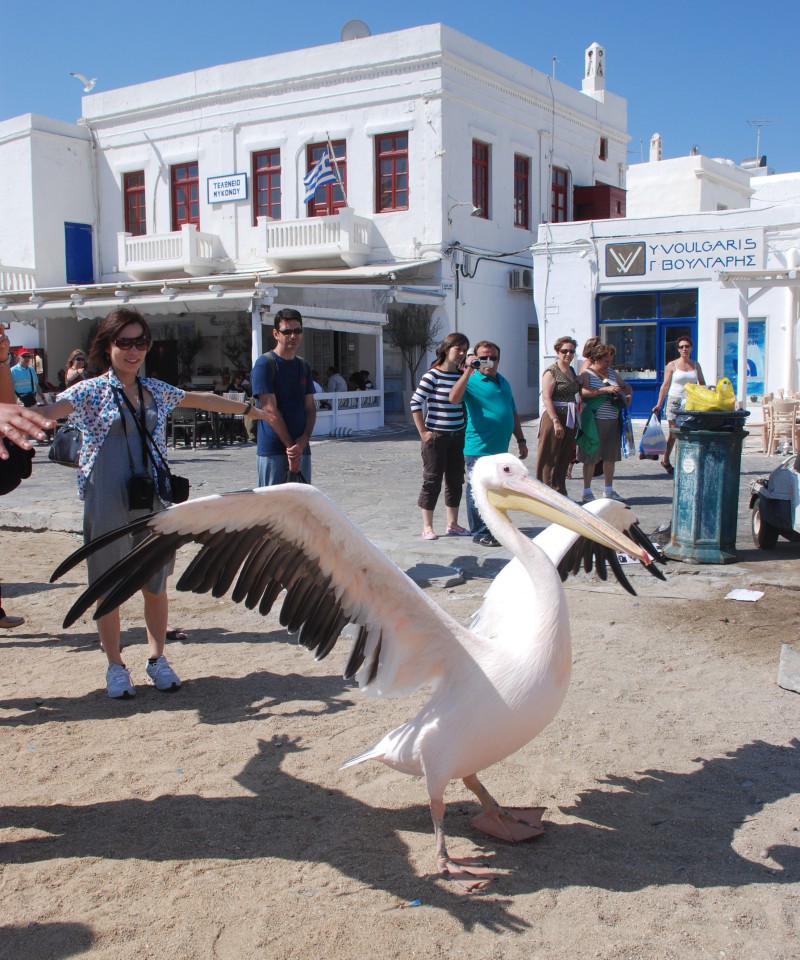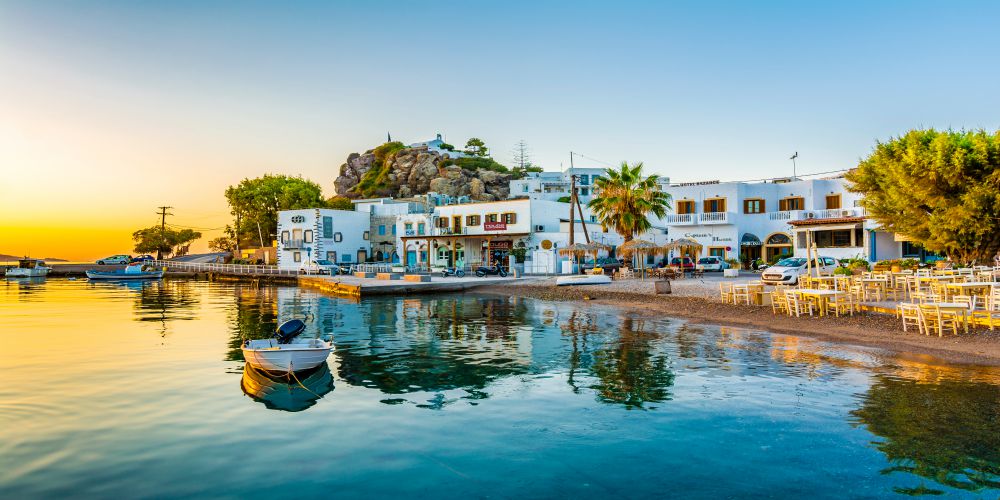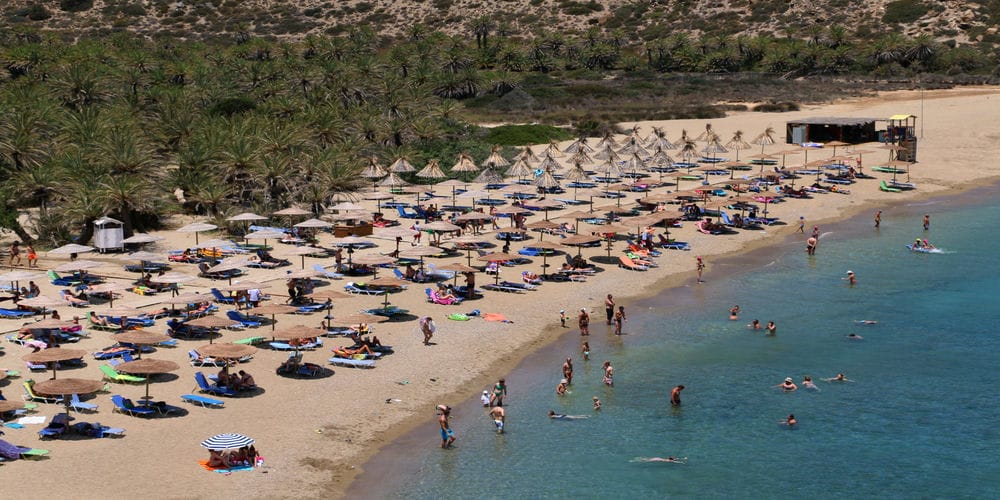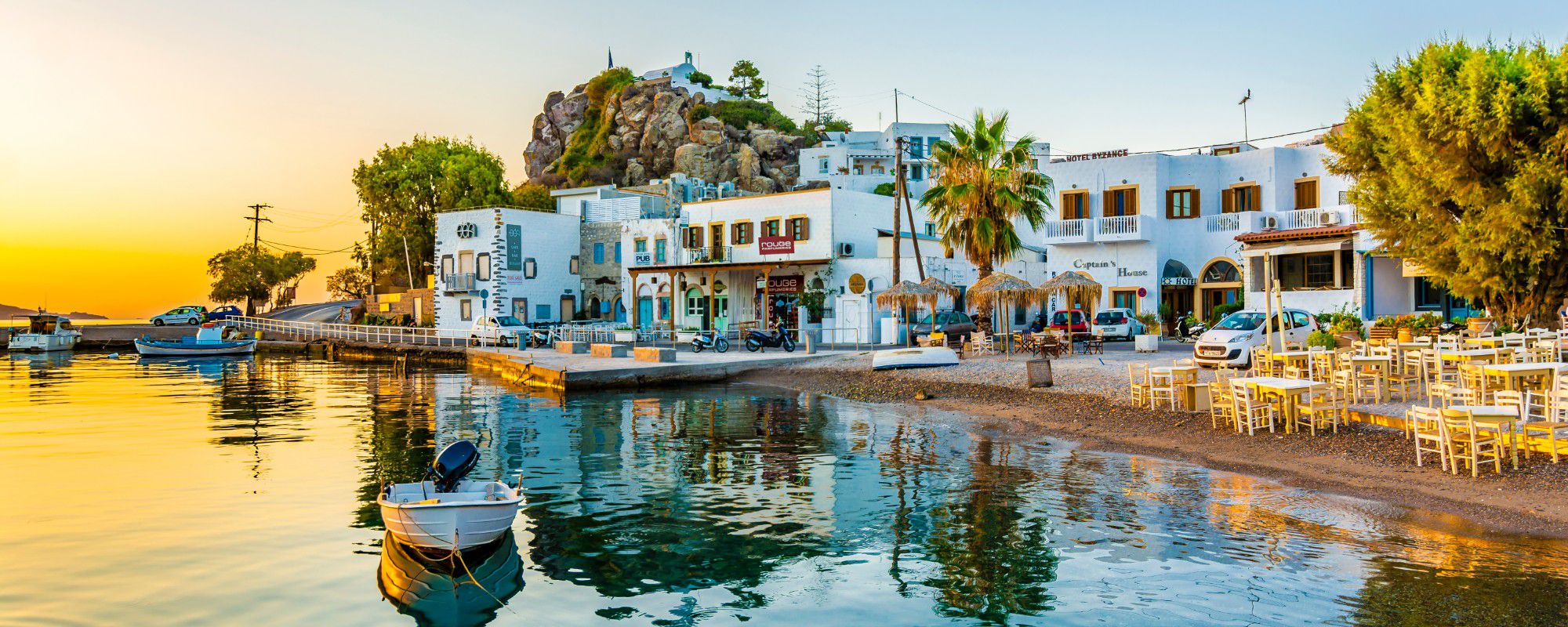
The Complete Guide to Patmos Island
Key Takeaways
- Patmos is a small and beautiful summer destination with a religious heritage and charming streets.
- The history of Patmos includes ancient Greek temples, Roman and Byzantine exile, and the writing of the Book of Revelation.
- The best time to visit Patmos is during the summer, with warm waters and a vibrant tourist infrastructure.
- Patmos can be reached by ferry from various Greek islands and is known for its picturesque villages and stunning beaches.

Small in size and great as a summer destination, Patmos is one of the most beautiful of the Dodecanese islands.
Groomed and neat, all white, like any genuine gem of the Aegean sea, with a mystagogical, sophisticated atmosphere but also a sophisticated-cosmopolitan aura, Patmos or otherwise 'the island of the Apocalypse,' since there, according to Christian tradition, the beloved disciple of Christ, the evangelist saint John, heard the voice of God, stands out for its religious heritage.
Equally remarkable, however, are the labyrinthine cobblestone streets, the cobbled squares, the traditional mansions, the crystalline beaches, and the good food, which make Patmos a top tourist destination.
Here is a comprehensive guide to the island of Patmos to get the most out of your stay in this magical destination.
The History Of Patmos Island
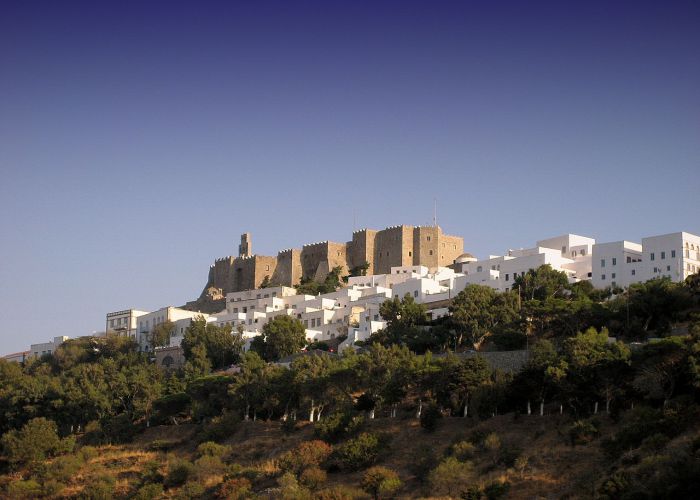
According to Greek mythology, Patmos was under the protection of the goddess Artemis, which is why Artemis and Apollo were worshipped there.
Although extensive archaeological excavations have not been carried out, it is certain that at the site of the Patmos monastery of Saint John, there was an ancient Greek Temple of Patmia Artemis, as evidenced by relevant inscriptions and the surviving columns.
In Kasteli, there are archaeological traces of a city from the 4th century BC. While there are indications that there were ancient settlements in other parts of the island.
Due to its rocky formation and the barrenness of its terrain, Patmos was used as a place of exile by both the Romans and the Byzantines. It was also used as a refuge and base for Arab pirates who exploited its numerous sheltered bays.
Patmos acquired its current glory from the time when the Evangelist John the theologian was exiled from Ephesus during the empire of Domitian. Secluded in the Cave of the Apocalypse as it is known today, John wrote the inspired book of the Apocalypse.
All the traditions surrounding the beloved disciple of Christ testify that Christianity prevailed early on on the island, as evidenced by traces of early Christian temples and objects.
The establishment of the monastery of Saint John the Theologian marked the birth of a cultural-spiritual-religious center, which is a point of reference for the entire Christian world. After the fourth crusade, Patmos came to the Venetians in 1207.
Since the foundation of the monastery, the island has seen continuous prosperity. From the 16th century onwards, intense intellectual and economic activity spread outside the monastery castle, where a thriving community developed.
Captains, merchants, and craftsmen built their mansions and settled on the sunken island of Patmos, filling it with goods from the East and West.
The great economic growth was accompanied by a corresponding intellectual movement and great growth in the arts, painting, handicrafts, and literature.
Best Time To Visit The Greek Island Of Patmos, Greece
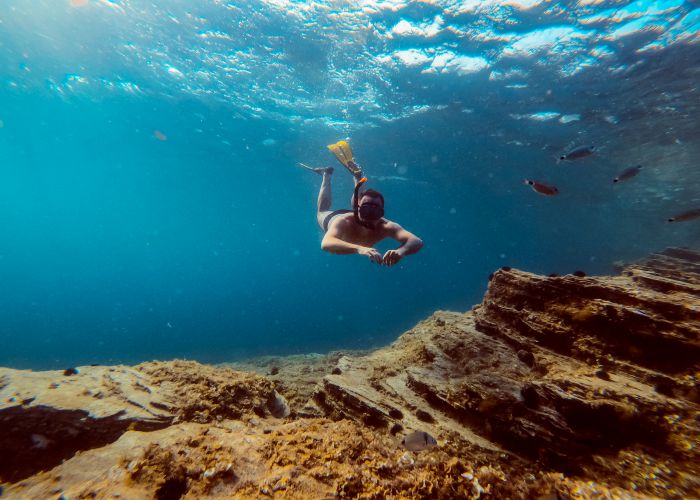
Like so many places in Greece, especially the Greek islands, the most beautiful season and best time to visit Patmos is during the summer. Undoubtedly, the island is best explored under bright sunlight and high temperatures.
Between the months of late May and early October, there are warm waters for swimming and bright sun for tanning while all eating and entertainment establishments are open, and the island's tourist infrastructure is at full force.
Of course, the peak season months of July and August are the busiest for the island of Patmos and, as a result, can be overwhelming for those who want to avoid the tourist crowds and want to experience an offbeat, authentic side of this magical destination.
Therefore, depending on your preference, early summer may be the most suitable season to go to Patmos if tourists aren't really your thing.
How To Reach Patmos From Athens And Other Greek islands
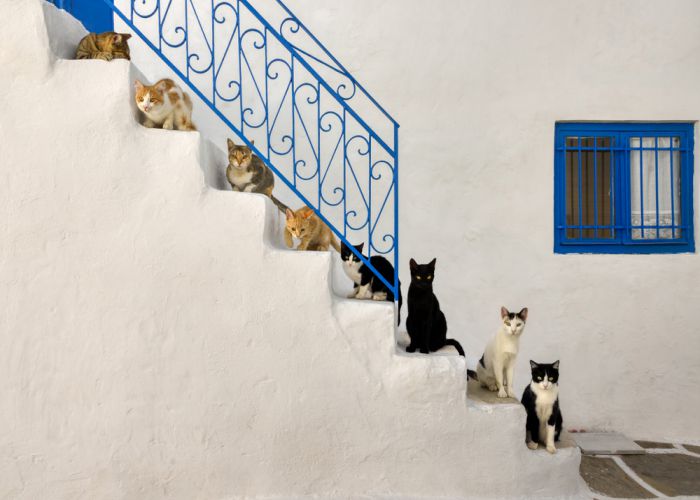
Unlike the neighboring islands of Samos, Leros, Kos, and Kalymnos, Patmos does not have an airport, so you cannot fly to the island.
On the positive side, the island is regularly serviced by ferries throughout the year, especially in the summertime.
In fact, Patmos port is connected by a ferry line with the Greek islands of Agathonissi, Mykonos, Paros, Samos, Syros, Leros, Naxos, Arkoi, Lipsi, Symi, and Rhodes.
As a result, you can reach the small island of Patmos from all these regions in addition to Athens, which makes it ideal for being a part of a Greek island-hopping adventure.
The Villages Of Patmos Island
The Chora of Patmos
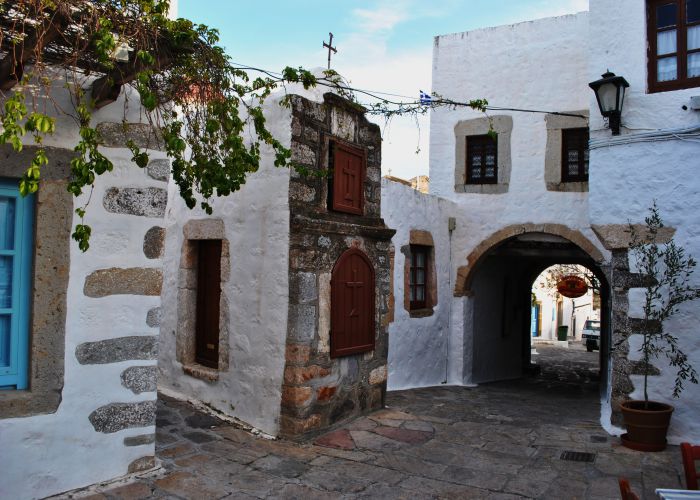
Patmos Town or Chora is completely different from anything you are used to on the Greek islands and the Aegean. It is located in the south-central part of Patmos at a distance of 4 km. from the port of Skala and is the second largest settlement on the island.
Chora is, in fact, the island's capital with 541 permanent residents, and has been declared a UNESCO World Heritage Site since 1999. It is built around the Castle that protects the Holy Monastery of St John the Theologian, which adds to its allure.
The reasons that forced the monks to build such a strong enclosure are obvious as the Monastery was founded and flourished in very difficult times. Pirates and various conquerors of the Aegean Sea eyed its spiritual and not only treasures.
Around the wall of the Monastery, the Country of Patmos slowly developed over the course of the years.
There are old grand mansions but also more humble whitewashed houses. But they all have the same common characteristics. Their architectural elements are in complete harmony with the sacred space they are adjacent to.
Nowadays, most of the houses of the Chora have been restored with respect to tradition. The characteristic feature in the architecture of the traditional houses in Patmos is the high corbel walls that are joined together and give the image of fortification.
Among the narrow and winding alleys of Chora, the historic cobblestone of 1794 stands out, which connects it to the island's port and was the main road in the past.
The attractions of Chora also include the house of Emmanuel Xanthos, the Folklore Museum housed in a traditional house, and the 17th-century mansion Semantiri.
The Town of Patmos has preserved its traditional character, possessing a unique atmosphere of tranquility and tranquility. It is considered by many - not without reason - to be the most beautiful village in the Aegean.
Skala Port
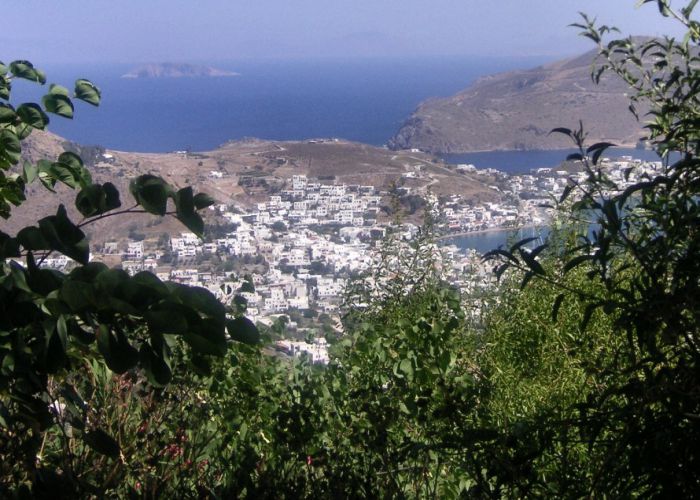
Skala is the main port and the center of Patmos. All public services and most of the island's shops are located here.
From there, visitors can start their tours of all the locations, attractions, and beautiful beaches of the island of Patmos.
In addition to the main port, you will find a beautiful beach, the new modern Marina, and most of the cafes, restaurants, taverns, and bars of the island, all concentrated within a short distance from each other. You will also find the branches of two local banks.
Pano and Kato Kampos
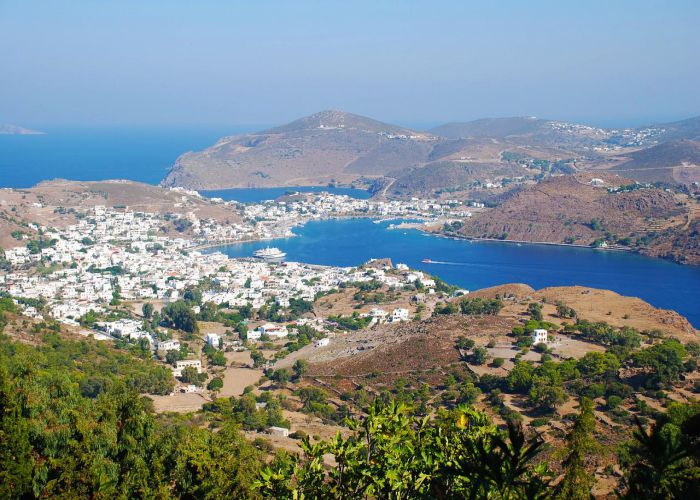
Kampos is one of the four important settlements of Patmos. Pano Kampos is a capital village that extends on low hills. At the same time, Kato Kampos is the settlement that develops around the beach of Kampos.
Kampos is the crossroads for several areas of Patmos. From the central square of Kampos, every road leads to the beach of the same name and several of the island's best beaches.
At the same time, Kampos showcases a less touristically developed side of Patmos, which is extremely idyllic and has nothing to envy from the cosmopolitan part of the island.
Grikos
Grikos is the fourth largest settlement of Patmos. It is a beautiful fishing village that has rapidly developed into a tourist settlement. The changes that occur year after year in Groikos are impressive.
Grikos has a small marina for boats, luxury hotels, a nice beach, shops on the beach, and is very close to the beautiful area of Petra.
The Best Beaches On Patmos Island
Petra Beach
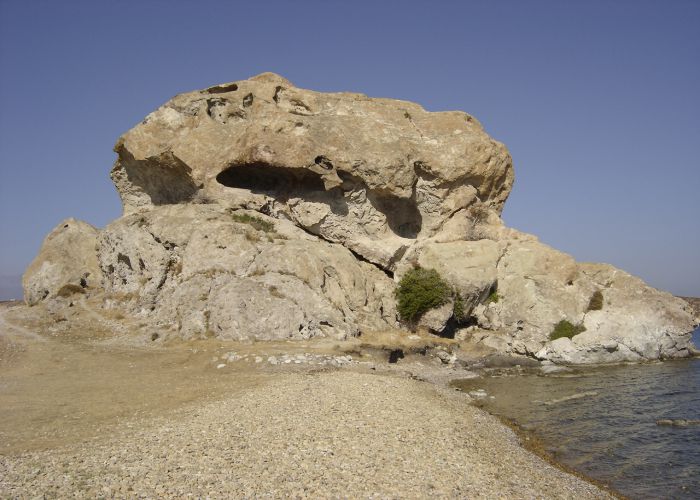
Petra is an organized beach with white pebbles and crystal-clear waters. It is located next to the narrow strip of land that joins the 'rock of Kalikatsou' to the mainland.
Apart from its sheer beauty visitors of Petra Beach will have the opportunity to enjoy water sports and taverns full of delicious local dishes.
Agriolivado
Agriolivado is a sandy beach with tamarisk trees, beach bar taverns, and water sports. It is located just 4 kilometers northeast of Skala Beach and overlooks the islet of Agia Thekla, which can be visited by rowing.
Agios Theologos
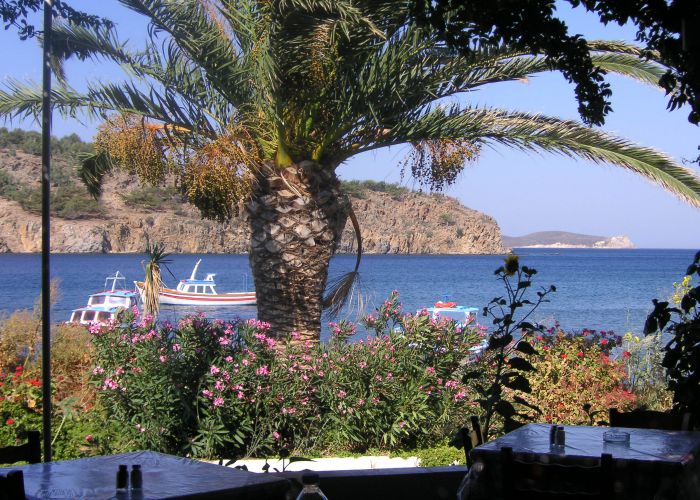
Offering a more organic landscape, Agios Theologos is an unorganized beach that you will find in the bay of Skala.
It is worth visiting this offbeat beach because it is a short distance from the taverns and cafes of the area, so it is especially convenient if you're visiting Patmos with your family.
Vagia Votsoloti
The beach of Vagia Votsoloti is located just after Kampos and is one of the quietest on the island. The shade, crystal clear blue waters, and a small cafe at the top of its creek make it a beautiful destination for a laid-back vibe.
Geranos

A particularly beloved beach with blue-green, crystal clear waters protected from the summer's heat the Geranos Beach.
In addition to its beautiful waters and serenity, the beach of Geranos Beach offers a view of the islet of Ai-Giorgis and is an idyllic choice for couples in love.
Grikos
A bay with fine gravel and sand that is more like a lake since two small peninsulas flank it. The sailing mooring gives it a cosmopolitan atmosphere, as does the view towards the Kalikatsou rock.
Along the beach of Grikos, you can find small picturesque taverns.
Kampos
The beach of Kampos is the busiest among the island's beaches, with shallow waters and facilities for water sports.
Its excellent tourist infrastructure and shallow waters make it a perfect swimming destination for families with children, while the water sports gather the adrenaline-motivated visitors of the island. Along it, you can find taverns, bars, cafes, and rental car shops.
Lambi

Famous for its colorful pebbles, which tourists are now forbidden to collect, Lambi Beach is a sight to behold.
The toponym 'Lambi' comes from the sun's shimmering on the multi-colored pebbles and the sea. Access to the beach is by road, and it is worth visiting the traditional restaurant located there.
Lambi Beach is located in the northeast of the island, 9.5 km. from Skala.
The beach boasts umbrellas and sunbeds, a cafe, and a famous traditional restaurant offering local delicacies everyone should taste.
Twin Beaches
Two almost identical coves form the Twin Beaches, at a distance of about a 15-minute walk from Vagia.
For those who are lovers of natural beauty and crystal clear blue waters, the Twin Beaches seem like an obvious choice.
Psili Ammos

Psili Ammos Beach is considered one of the most beautiful on the island and has fine, golden sand, which gives it an exotic beauty.
The only downside of this otherwise gorgeous beach is its difficulty in access. You can reach Psili Ammos either by boat from Skala, or by foot, following the path from Diakofti.
Chiliomodi
The beach of Chiliomodi took its name from the Byzantine unit of measurement of grain, the 'modi,' suggesting that it used to be a place of cereal cultivation thanks to the existence of a small spring of fresh water. This is documented by the stone terraces and the ruins of a small windmill.
It is a long beach with dark pebbles and unmatchable beauty.
The Best Things To Do On Patmos Island
1. See from up close the Cave of the Apocalypse

In the middle of the route from Chora to the port of Skala is the cave of Revelation, which according to tradition, was the refuge of John, the beloved disciple of the Lord, in 95 AD, when he was exiled by the Roman emperor Domitian because of the preaching the word of God in Ephesus.
In this cave, again, according to tradition, John the Theologian and Evangelist wrote the Book of Revelation, the only prophetic book of the New Testament.
It testifies, in fact, that the triple cleft of the rock of the ceiling was formed at the moment of the vision of the Revelation of the Triune Godhead, and it symbolizes the threefold nature of God.
In this area, before the arrival of Saint Christodoulos in Patmos, a church was founded in memory of the Transfiguration of John the Evangelist. Later, another church was added in honor of the Theopromitor Anne, which was renovated in the first quarter of the 17th century.
The modern building complex results from the building activity of monks and nuns who served in the following centuries in the cave of the Apocalypse.
Today in the region of the cave of the Apocalypse, there are the chapels of Theologos, Agia Anna, Agios Artemios, and Agios Nikolaos.
2. Visit the monastery of Saint John the Baptist
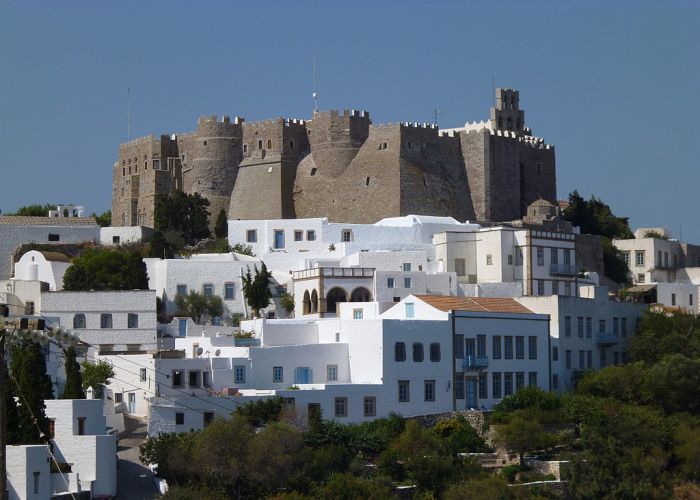
Points of reference for all Patmos visitors, whether from Greece or abroad, are certainly the castle monastery of Saint John and the holy cave of the Apocalypse, which have been included in the list of UNESCO World Heritage Sites.
Built on the hilltop of Patmos' Chora, apparently on the site of a temple of Artemis and an early Christian basilica, the monastery of Saint John the Theologian and Evangelist, which is his official name, was founded by Saint Christodoulos at the end of the 11th century.
Saint Christodoulos, the abbot of the great monastic community of Mount Latrus in Bithynia, had asked the Byzantine emperor Alexios I Comnenus for Patmos to establish a monastic state there.
Indeed, in April of the year 1088, the emperor donated Patmos and the surrounding islets to Saint Christodoulos with gold bullion, granting absolute sovereignty and special privileges. Then, the first brotherhood of monks settled on the island together with workers, and the construction of the castle monastery began.
Saint Christodoulos died in Evia in 1093, but his work was continued by his disciples, who also took care of the transfer of his remains to Patmos.
The monastic complex is surrounded by a defensive enclosure built from the end of the 11th century to the 17th century.
The monastery's Catholicon has a masterpiece iconostasis from 1820 and elaborate frescoes of Cretan art, dating from around 1600.
The chapel of Panagia (on the south side of the catholicon), the oldest of the impressive monastery, has excellent frescoes from the end of the 12th century.
The chapel of Saint Christodoulos, in the southwest corner of the catholicon, was built immediately after the relics of the founder of the monastery were brought back from Evia (1094).
Apostle John the Theologian's monastery is also the post-Byzantine chapels of Basil the Great, Saint Nicholas, All Saints, Holy Cross, Holy Forerunner, Saint Apostles, Saints Constantine and Helen.
Outside the monastery grounds are the chapels of Saint Georgios and Saint Onofrios.
In the library of the Monastery of Saint John, the Theologian, codices, documents, and antiquities of great value are kept. At the same time, in the repository area, rare relics are exhibited (icons, sacred vessels, vestments, documents, gold scrolls, lead scrolls, codices, and Turkish firmans).
3. Explore the archaeological site of Kastelli
The Kastelli site is undoubtedly Patmos's most important archaeological site, where the ruins of the ancient acropolis and the foundations of the temple of Apollo are preserved.
A naturally fortified hill, Kastelli rises west of Skala and north of Chora and offers an unobstructed view of three bays: Skala, Chochlaka, and Merika, while the islands of Naxos and Ikaria can be seen on the horizon, factors that explain the choice of the location by the ancient inhabitants of the island to build their citadel.
Surface sherds and stone tools made of obsidian and flint found in the area and exhibited in the Nicolaidis Mansion show that there was already a residential settlement from the Bronze Age.
At the same time, findings from the geometric, classical, Hellenistic, and even Roman times testify to the continuous use of the hill throughout the historical years.
Today, in Kastelli, there are impressive remains of fortifications dating back to the end of the classical period, which can be seen when climbing from Skala.
To visit the ancient acropolis of Patmos, you will follow a path of about three kilometers that starts from the port of Skala (one to one and a half hours' walk), a short distance from the Baptistery of Agios Ioannis. The view offered by Kastelli will reward you for your journey to its top!
4. Admire the windmills of Patmos
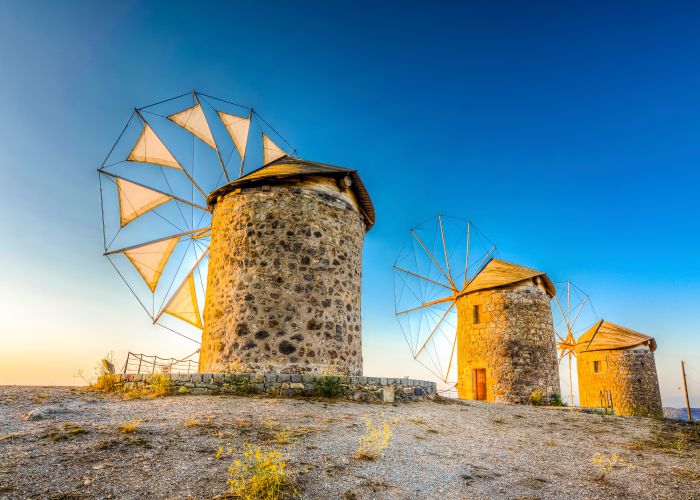
Patmos Windmills - credits: Nejdet_Duzen/Shutterstock.com
Built to the east of the Holy Monastery of Patmos, on top of a hill overlooking the sea, the three windmills of Chora gave their name to the neighboring district of Mylon.
Since their restoration in 2010, they have been an additional jewel of the island, which was awarded by Europa Nostra.
The windmills, two of which date back to 1588, and the third built in 1863, fell into disuse at the end of the 1950s when industrial flour mills replaced traditional production as they did throughout Europe, the mills were abandoned.
The ruined shells, visible from the sea, moved the Swiss sailor and banker, Mr. Charles Pictet, a fervent friend of Patmos. With his initiative, funding, and contributions from private individuals and the Stavros Niarchos Foundation, their restoration work was commissioned and carried out with the cooperation of people from different backgrounds but with the same love and respect for tradition.
Today, the first mill is re-operating as a flour mill, with the ultimate aim not only to offer its visitors the image of traditional flour production technology but also to contribute to the revival of the traditional professions of flour and baking and the production of truly otherworldly products.
The second windmill of Patmos, thanks to the replacement of the millstone by a generator and the installation of a metal running beam for the impeller with a mechanical brake, is able to generate electricity from wind energy. Finally, the plan for the third windmill is water production.
The windmills of Chora are rightfully one of its attractions, but above all, they are a living monument, a bridge that connects the past with the present and the future.
5. Marvel at the Rock of Kallikatsou
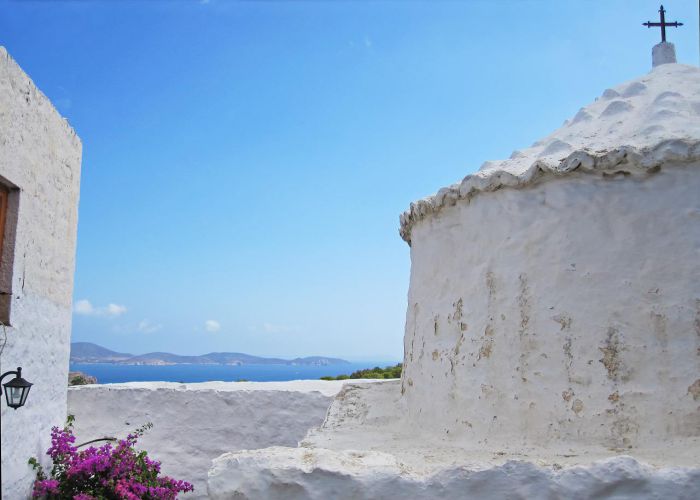
According to the legend, the Stone of Kallikatsou is nothing but the curse of a mother who (literally) took place: tempted by the beautiful sea of the gulf, and while she had just had communion, a girl wanted to dive into its waters. Her mother forbade her to do so, but she persisted, provoking the anger of the former. Enraged, she shouted: "If you go, turn to stone." And so it happened.
As for the toponym, Kalikatsu is the name often given on the islands to the cormorant (Phalacrocorax Aristotelis Desmarestii), a black seabird that resembles a cormorant, and which was given because it nests on this rock.
Researchers believe that the Rock of Kallikatsou is an archaeological site where, from prehistoric to historical times, there was an outdoor sanctuary with continuous worship, possibly dedicated to Aphrodite.
The carved steps, the cave, the artificial pits and alcoves for placing votives, and the water tanks are all elements that would have been necessary for the ancient rites.
This theory tends to be supported by the findings in the area of the archaeologist Pavlos Triantafyllides, i.e. stone tools and surface ceramics, which prove that it was inhabited during the late Bronze Age.
As often happens, the elements of the ancient sanctuary changed to use with the establishment of Christianity when it was turned into a hermitage, and the monks used the existing premises as hermitages until the 14th century AD.
Finally, it is worth noting that, geologically, the Rock of Kallikatsos is a volcanic rock from the era of volcanic activity in the area (four million years ago), formed by the fusion of many volcanic fireballs. At the same time, its shape comes from the way of connecting the materials of the basaltic lava from which it came.
6. Put a folklore spin on your trip with the Nikolaidi Mansion
A two-story building with Gothic features, the Nikolaidi Mansion was built between 1705 and 1796 in Chora of Patmos and is a typical example of the urban architecture of the island.
After the earthquake of 1956, the mansion was seriously damaged, while in 1959, after its owners donated it to the Greek State, it was restored and organized by the Archaeological Service in an exemplary manner in an exhibition space.
The purpose of the exhibition hosted here is for the residents and visitors of the island to come into contact with the mansions and the lifestyle of the people who lived here and to get to know the island's history from prehistoric to modern times through archaeological finds and informational material.
In addition to its museum character, the Nikolaidi Mansion occasionally hosts cultural events.
Final Thoughts
There is no doubt that Patmos is a unique Greek island that doesn't hold a resemblance to any other part of the country and the world.
Its one-of-a-kind character, alongside its stunning beauty, makes it a top summer destination that maintains an off-the-beaten-path quality.
Consider this your sign to visit Patmos this summer!





